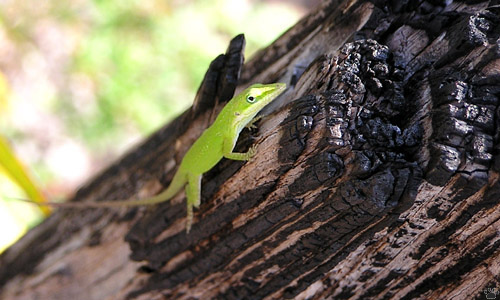
Green anole (Anolis carolinensis), Ocala National Forest. |
Florida, part 18: Lizards
The most common and ubiquitous reptiles of Florida are anolis lizards. They are as common in dense forests as on city sidewalks. Males have large, bright-colored throat fans, extended rhythmically during displays.
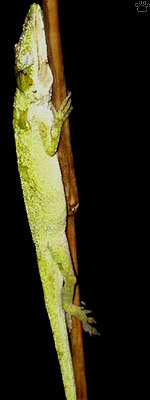
Sleeping green anole, ABS. |
 | 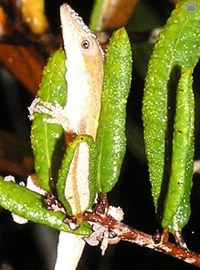 | 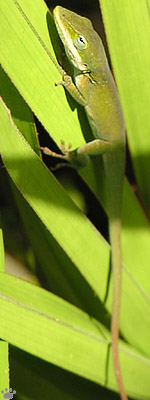
Green anole having a siesta, ABS. | | Sleeping green anoles, Archbald Biological Station. |
| The only native species is the green anole. It can be seen in tall trees as well as on the ground, but spends most time in low trees, bushes, vine tangles, and tall grass. At night it turns pale and can be easily found with a flashlight. It is possible that the southernmost Florida population is composed of 2-3 very similar species. |
 |
 |
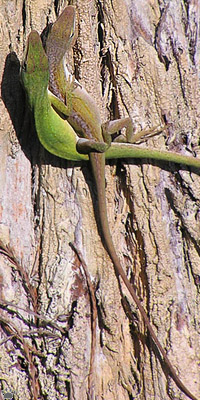 |
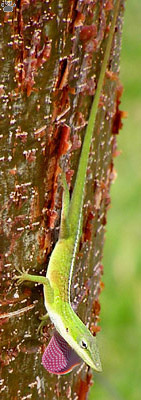 |
| Green anoles are not always green - they can change color. Everglades National Park. |
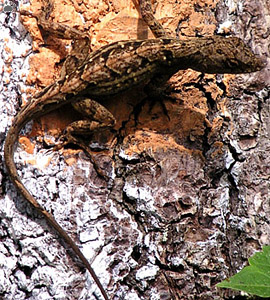
Brown anole (A. sagrei), Wekiwa Springs State Park. |
The most common introduced species is Puerto Rican brown anole.
|
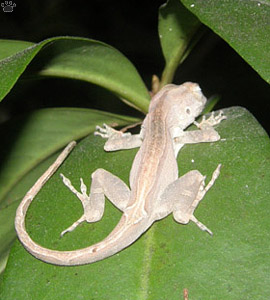
Sleeping brown anole, Matheson Hammock State Park. |
 |
 |
| Hatchlings of brown anole, Coral Gables. |
It has widely replaced the green anole, except in some remote areas.
|
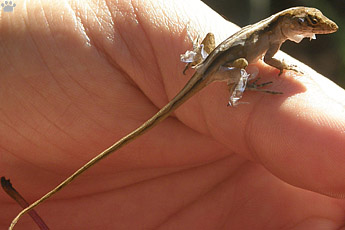
Moulting brown anole, Highlands Hammock State Park. |

Brown anole, ENP. |
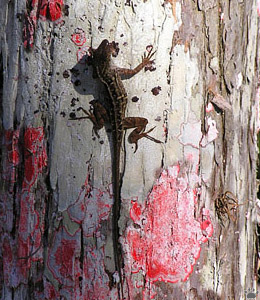
Brown anole, Big Cypress National Preserve. |
This species is more terrestrial and more aggressive. It is also good at color changing. |

Brown anole with its throat fan extended, BCNP. |
 |
 |
| Mating brown anoles, ABS. |
| It is now abundant in virtually all habitats all over Florida. |

Sleeping Puerto Rican crested anole (A. cristatellus), MHSP. |
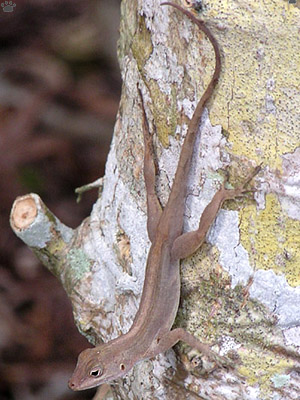
Puerto Rican crested anole, female, MHSP. |
Six more Caribbean species of anoles have established populations in Florida, but they are mostly confined to Greater Miami area. They are less cold- resistant, and die in large numbers during unusually cold winters. |

Puerto Rican crested anole, male, MHSP. |

Largehead anole (A. cybotes), introduced from Hispaniola, MHSP. |

Cuban green anole (A. porcatus), CG. |

Cuban green anole, CG. |
All seven introduced anoles occur in the city of Coral Gables, but the native green anole is almost extinct. It hasn't evolved the ability to compete with others. |
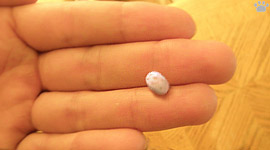
Egg of brown anole, CG. |

Cuban green anole, CG. |
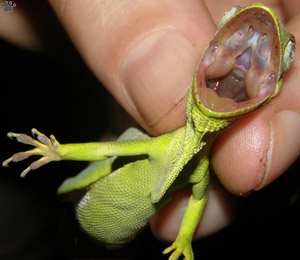
Jamaican giant anole (A. garmani), MHSP. |
Anoles are often used in studies of various aspects of animal behavior and evolution, including speciation and habitat separation. |
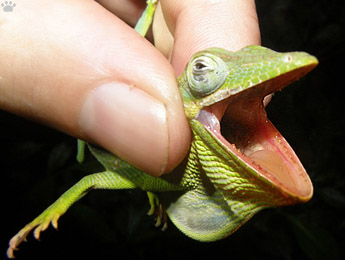
Jamaican giant anole, MHSP. |
 |
 |
| Jamaican giant anole, MHSP. |
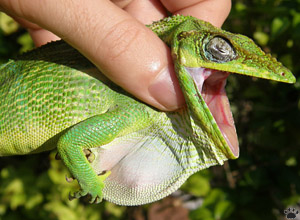
Knight anole (A. equestris), CG. |
Knight anole, originally from Cuba, is by far the the largest. It is completely arboreal, and hunts on tree trunks and large branches. |
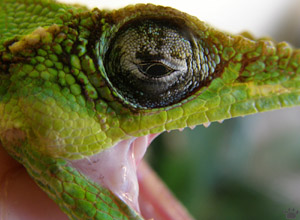
Knight anole, CG. |
 |
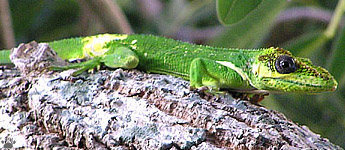 |
| Knight anole, CG. |
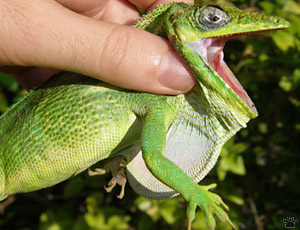
Knight anole, CG. |
It can sometimes be seen sitting motionless on the trunks of streetside trees, waiting for smaller anoles and geckos to catch. |

Foot of knight anole, CG. |

Knight anole, CG. |

Knight anole, CG. |
These lizards is particularly sensitive to cold spells. On cold winter mornings, they sometimes fall from trees, dead or paralyzed by cold. |

Foot of knight anole, CG. |
 |
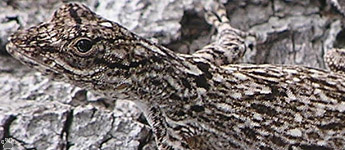 |
| Bark anole (A. distichus), CG. |

Bark anole, CG. |
Tiny bark anoles also live on tree trunks. They are native to Hispaniola and the Bahamas. |
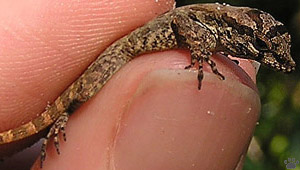
Bark anole, CG. |
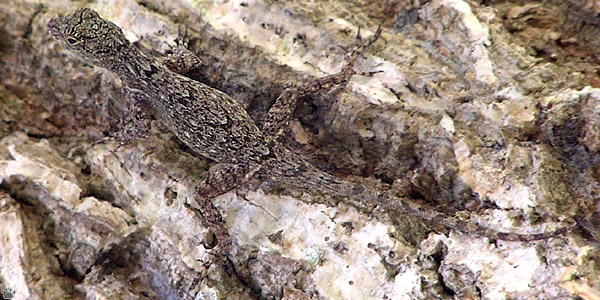
Bark anole, CG. |
Part 19. Lizards (continued)
Back to Part 17
Home
|